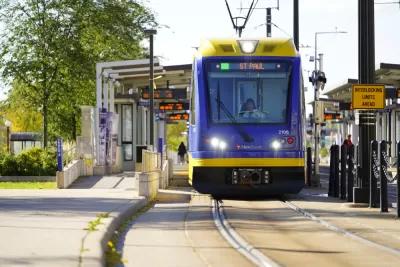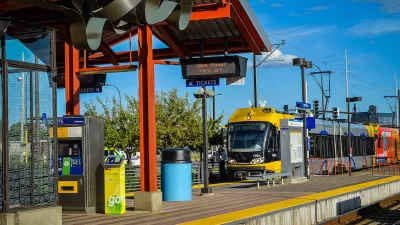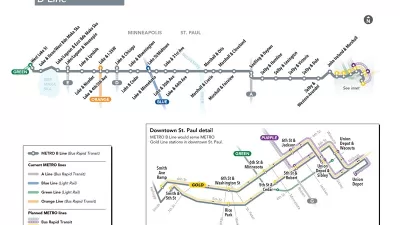Showing refugee and immigrant residents how to use public transportation can improve access to essential services, jobs, and education, but a more robust transit system is needed to effectively serve all who need it.

A nonprofit in the Twin Cities is helping new immigrants and refugees navigate the region’s public transit system in an effort to make jobs, shopping, schools, and other services more accessible to new Americans. Volunteers with the International Institute of Minnesota (IIMN) pair up with clients who want to learn how to get around on local transit but speak and read limited English, reports Henry Pan in Next City.
In spite of the organization’s efforts, obstacles remain for people who work in more remote areas not served by Metro Transit, which has been slow to recover after losing both ridership and drivers during the pandemic. According to the article, “year-to-date ridership as of June remains at 49% of year-to-date ridership in June 2019.” And while the agency is taking actions to include more translated materials, “They also learned those who do not understand English might not have necessarily understood the content being translated in their native language – in part because they may not be fully literate in their primary language, rendering the agency’s efforts moot.”
Language barriers aside, Pan notes, “Perhaps the answer to making transit service accessible to those who do not understand English is to simply have more frequent service that goes where people need to go.”
FULL STORY: How The Twin Cities Is Making Transit Accessible To Immigrants And Refugees

Alabama: Trump Terminates Settlements for Black Communities Harmed By Raw Sewage
Trump deemed the landmark civil rights agreement “illegal DEI and environmental justice policy.”

Planetizen Federal Action Tracker
A weekly monitor of how Trump’s orders and actions are impacting planners and planning in America.

Why Should We Subsidize Public Transportation?
Many public transit agencies face financial stress due to rising costs, declining fare revenue, and declining subsidies. Transit advocates must provide a strong business case for increasing public transit funding.

Understanding Road Diets
An explainer from Momentum highlights the advantages of reducing vehicle lanes in favor of more bike, transit, and pedestrian infrastructure.

New California Law Regulates Warehouse Pollution
A new law tightens building and emissions regulations for large distribution warehouses to mitigate air pollution and traffic in surrounding communities.

Phoenix Announces Opening Date for Light Rail Extension
The South Central extension will connect South Phoenix to downtown and other major hubs starting on June 7.
Urban Design for Planners 1: Software Tools
This six-course series explores essential urban design concepts using open source software and equips planners with the tools they need to participate fully in the urban design process.
Planning for Universal Design
Learn the tools for implementing Universal Design in planning regulations.
Caltrans
Smith Gee Studio
Institute for Housing and Urban Development Studies (IHS)
City of Grandview
Harvard GSD Executive Education
Toledo-Lucas County Plan Commissions
Salt Lake City
NYU Wagner Graduate School of Public Service





























